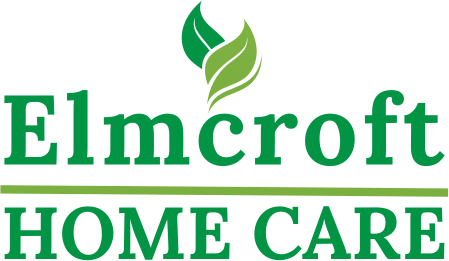The house feels too quiet these days, the kind of quiet that presses in like an uninvited guest. Your mom, once the bustling heart of every family gathering with her stories and laughter filling the air, now spends her afternoons staring out the window at a world that seems to have moved on without her. The TV murmurs softly in the background, a poor substitute for conversation, its canned applause echoing hollowly off the walls. Phone calls from you—three states away, juggling deadlines and school runs—offer a brief, flickering lifeline, but they fade all too quickly, leaving her with the heavy weight of unspoken longing and the slow creep of isolation. “I’m fine,” she insists during your hurried check-ins, but you can hear the subtle echo of solitude in her voice, the way it wavers just a fraction.
For millions of seniors, this isn’t merely a passing phase of solitude; it’s a silent, insidious thief that erodes not just their joy but their very health, one empty hour at a time. The profound tension here cuts deep: You’re torn between the relentless pull of your own chaotic life—work demands, family obligations, the sheer exhaustion of it all—and the gnawing, helpless fear that your physical distance is dimming her inner light, perhaps forever, turning vibrant memories into faded photographs gathering dust.
This pervasive loneliness among older adults is far from anecdotal; it’s a public health crisis with stark, sobering numbers. According to the CDC, about one in three adults in the U.S. experiences loneliness, a figure that climbs even higher for those over 65, where nearly 30% live alone and report feeling isolated at least some of the time. Recent 2024 data reveals that 29% of older adults felt isolated often or some of the time, a slight uptick from pre-pandemic levels, underscoring how disruptions like the loss of a spouse, retirement, or mobility challenges compound the issue.
The health toll is devastating: Social isolation doubles the risk of dementia, increases heart disease by 29%, stroke by 32%, and even premature death, turning what starts as emotional ache into tangible physical decline. It’s not abstract suffering; it’s the missed birthday call that spirals into a week of withdrawn silence, the “forgotten” doctor’s appointment because facing it alone feels insurmountable, or the gradual retreat from hobbies that once brought color to their days. Families bear the brunt too—the guilt-laced texts that go unanswered, the strained holidays where forced cheer masks the aching void, and the quiet dread of “What if I’m not doing enough?” that keeps you up at night, replaying conversations you wish you’d extended.
Yet, amid this shadow, there is a path forward, one that honors the depth of the struggle without demanding upheaval. It begins with validating the feeling rather than dismissing it, acknowledging the pain as real and shared. Try shifting the script in your next call: “Mom, I miss our long chats too—they’re the highlight of my week. What if we made them even better?” Reconnect through intentional, low-pressure rituals that bridge the miles, like starting a virtual book club where you both read the same mystery thriller and dissect plot twists over video, or sending curated care packages filled with inside jokes, favorite teas, and prompts for letters back. Community resources can help too—local senior centers host socials, exercise classes, or volunteer opportunities that foster organic bonds—but for those deeply rooted in their home routines, transportation barriers or sheer reluctance can make these feel worlds away, widening the isolation gap instead of closing it.
That’s where professional home care companionship steps in as a game-changer, transforming an echoing, empty house into a haven of lively, meaningful interaction without the uprooting stress of major changes. Envision a warm, thoroughly vetted aide who arrives not as a clinical “helper” but as a genuine companion, attuned to your loved one’s unique quirks and history—someone to brew a pot of their favorite chamomile tea, pull out dusty photo albums for nostalgic reminiscing, or dive into a marathon puzzle session that stretches hours with easy camaraderie. This isn’t scripted small talk; it’s organic, tailored engagement that sparks joy: Gentle morning walks to the neighborhood park where birdsong and fresh air replace the silence, baking afternoons that waft the comforting scents of cinnamon and vanilla through the rooms, or even coordinating light errands that double as excuses for people-watching chats at the local café.
At Elmcroft Home Care, our services are personalized to individual personalities—thoughtful discussions on classic literature for the bookish soul, hands-in-the-dirt gardening sessions for the green-thumb enthusiast, or trivia games laced with family lore to keep connections alive—ensuring every interaction feels natural and nourishing, not like a chore or obligation imposed from afar.
To truly grasp the transformative power of this approach, let’s delve into the real-life journey of Harold, a spirited 78-year-old whose post-retirement days had blurred into one monotonous gray stretch after his wife’s passing. “He’d light up like a Christmas tree during our visits,” his son, Mark, recalls with a pang, “but then he’d fade right back into the shadows, canceling golf games and skipping calls.” The family’s worry mounted as Harold’s appetite waned and his once-sharp wit dulled, subtle signs of creeping depression that no amount of pep talks could fully pierce. The introduction of weekly companion care marked a pivotal shift: What began as casual board game afternoons evolved into impromptu storytelling circles with a few like-minded neighbors, drawing Harold out of his shell and reigniting his passion for sharing war stories from his Navy days. Within months, his mood had lifted dramatically—depression symptoms halved, as noted in follow-up doctor’s visits—and family Zoom gatherings buzzed with his animated latest tales, evolving from obligatory check-ins into genuine celebrations of his rekindled spark. “It’s not just about filling time,” Mark reflects; “it’s giving him back the dignity of being seen and heard every day.”
Empowering yourself with early detection and proactive strategies can fortify these efforts, turning vulnerability into resilience. Keep an eye out for the telltale whispers of deepening isolation: The withdrawal from long-loved hobbies, like setting aside the knitting needles mid-row; neglected personal grooming that signals a loss of self-care motivation; or the flat, evasive response of “Nothing new here” that belies a world shrinking inward. Gentle self-assessment tools, such as the free UCLA Loneliness Scale available online, can help gauge the intensity without confrontation, opening doors to timely support. Layer in technology thoughtfully to amplify connections—smart video doorbells that chime with surprise video hellos from grandkids, or user-friendly apps that pair seniors with volunteer callers for scheduled, judgment-free chats—while balancing it with in-person touchpoints to avoid the cold glow of screens overshadowing warmth.
At Elmcroft Home care, we specialize in crafting companionship plans that meticulously weave threads of joy back into the fabric of daily life, empowering your loved one to thrive vibrantly within the familiar comfort of home. We don’t just combat loneliness; we cultivate belonging, one shared smile at a time. Don’t let empty rooms dictate the narrative of their golden years—fill them with the voices, laughter, and stories that truly matter. Reach out today for a complimentary loneliness assessment tailored just for your family. Because at its essence, true aging in place isn’t about enduring the quiet; it’s about nurturing hearts that remain full, connected, and alive with possibility.

